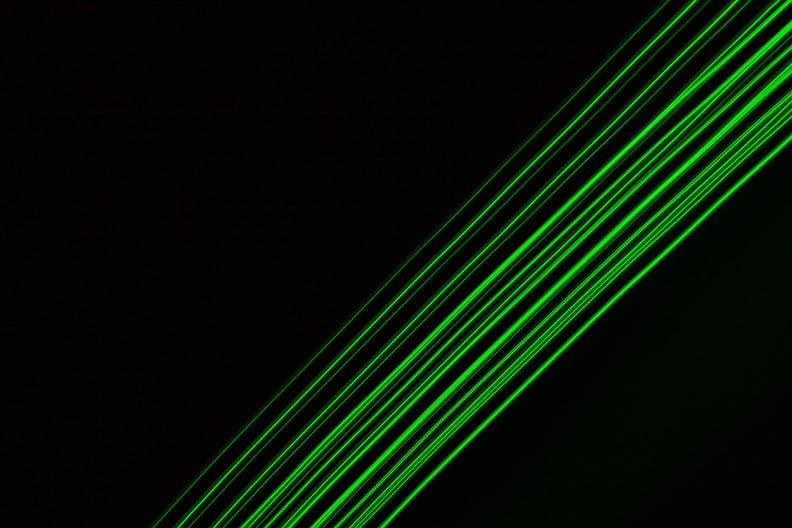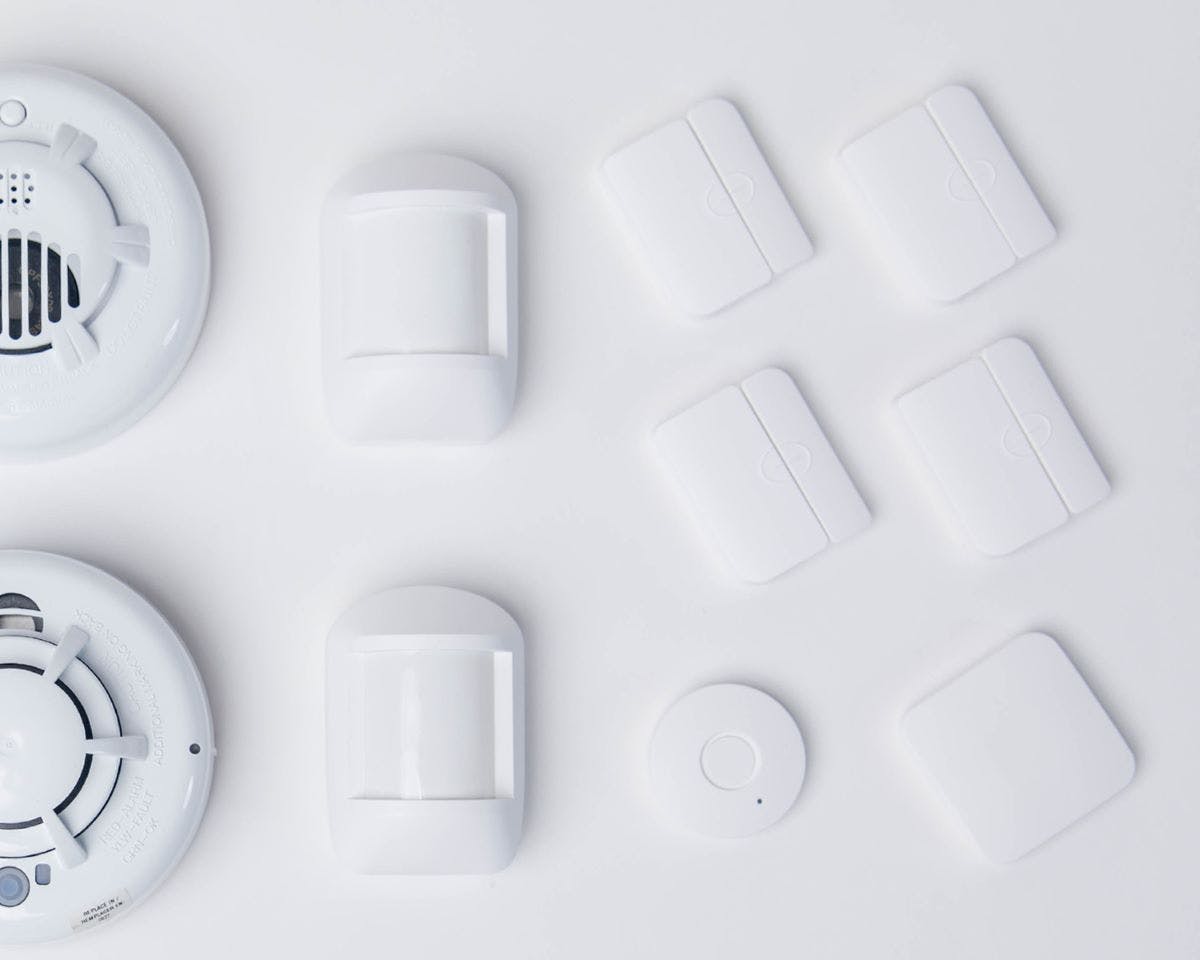
If you’ve ever seen Get Smart, Ocean’s 12, or any other spy or heist movie, you are probably familiar with the trope of a security system that utilizes laser beams. The hero usually needs to navigate his way through the lasers by using a combination of yoga and crazy ninja moves. This is possible because he can see exactly where the lasers are, as they are a combination of crisscrossing red lines.
In real life, laser beams are not fully visible red lines, and many are actually invisible. In security alarm systems, lasers serve the purpose of stealth. Depending on the alarm system you set up, the intruder may or may not even realize that he has triggered an alarm, which will allow more time for the authorities to catch him.
If you are considering a home security system of any kind, you may consider incorporating laser tripwires into the mix. They will help you
What is a Laser?
The word “laser” is actually an acronym for “Light amplification by stimulated emission of radiation”. Essentially, a laser concentrates light to create a straight and bright beam. Lasers have multiple uses, including hair removal, eye repair, and cutting. Nowadays, some dentists even use lasers instead of drills when filling small cavities. And as we are discussing in this post, they can also be a huge part of home security.
Lasers are made up of three main components:
- A pump, or pump source, which provides energy to the laser system. This can also be referred to as a power supply. This can be anything from a lamp to a chemical reaction. Without an energy source, the laser would not have anything to amplify.
- The laser medium is the medium through which the energy is filtered, and determines the wavelength of light that the laser will emit. This is also referred to as the gain medium. The gain medium can be solid, liquid, or gas, depending on the type of laser.
- The optical resonator (or the optical cavity) consists of mirrors that concentrate the light or energy by reflecting it back into the gain medium, which then amplifies the total light emitted by the laser.
Some lasers use multiple small mirrors in order to reach the amount of concentration necessary for their use. For a security system, lasers don’t need to be particularly strong, they just need to create a beam that will be broken when someone tries to cross it. By contrast, in the field of medicine, more concentrated levels are needed to perform eye surgery or dental surgery.
How Are Lasers Used in Home Security?
1. Laser tripwire: You may already be familiar with this concept, but a tripwire is a wire that is stretched taut across a path and triggers an alarm when it is disturbed. Laser tripwires follow a similar concept. The beam of laser light is shined across the path into some kind of receiver on the other side of the path. When the laser beam is broken, the alarm is triggered. This alarm can be located inside the house, or it can even be a text message sent to your cell phone.
2. Laser fence: Laser fences are essentially big nets of laser tripwires. They are set up all the way around the perimeter of a home. Having a laser fence ensures that you are notified whenever someone breaks through the perimeter of your home. Depending on the strength and concentration of the lasers, a laser fence can actually cause physical damage to someone who tries to cross it.

Homemade Laser Security
There are also some fairly easy do-it-yourself alarm systems that you can put up just about anywhere. YouTube is full of DIY project tutorials on how to make simple security systems out of a laser pointer.
It’s actually fairly easy to create your own homemade laser security alarm using something as simple as a laser pointer. These are created by setting up the laser pointer and reflecting it against a light sensor. This sensor is hooked up to a circuit board of some kind, which then talks to a computer that has been coded to do an action (whether that means sounding a buzzer or sending you a text message). When the beam of the laser pointer is broken, a switch will flip on the circuit board, which will then trigger the computerized response, notifying you of any intruders in the area.
Can Lasers Hurt You?
The short answer to this question is: it depends. It depends on the strength of the laser and where the laser is being directed. Lasers used in surgeries and other medical procedures are much stronger, and therefore much more dangerous than the lasers used in pointers and for security. Because the light is so concentrated, many lasers generate a good amount of heat.
The chief danger that can arise from the use of lasers is damage to the eye, specifically the retina. The retina can thin and burn, causing permanent eye damage. You’ve probably heard that you shouldn’t shine laser pointers in your eyes, and this is part of the reason. Eye damage is much less likely from a low-level laser pointer than from a moderate- or high-level laser, but it can still occur.
Thermal damage can also occur to the skin, depending on the strength of the laser you are working with. Burns occur when the concentrated heat of the laser causes the proteins in the skin to break down. Photochemical damage occurs in conjunction with thermal damage, but it is a result of the light from the lasers, rather than the heat. Chemical changes happen in the skin as a result of prolonged or concentrated exposure to short wavelengths of light like ultraviolet and blue light.
So, what are some safety procedures you can use when working with lasers?
Well, to protect your eyes it is always a good idea to wear safety glasses. Some glasses are specifically designed for use against lasers. If you’re planning on installing or building a laser security system, some glasses would be a good idea. In home security, most of the lasers that are in use are low-grade. Exposure to them is not likely to hurt you. The purpose of these lasers is simply to trigger an alarm when an intruder breaks the beam, not to hurt the intruder. A higher-grade laser security system would be too potentially dangerous for the residents of a building.

Should You Get a Laser Security System?
You might consider purchasing a security system with lasers incorporated for any of the following reasons:
- You are protecting a particularly important or valuable item that is on display. In this case, lasers are simple and effective, as long as they are paired with the rest of a security system. Motion sensors can tell you that someone is in the building. Lasers can tell you what they are after. For this reason, many museums incorporate laser systems into their security.
- You want an invisible perimeter. If you are hoping to protect your home, honestly, a fence or big wall can be a great deterrent to burglars. But if you do not want a large fence, a laser system can serve you well. It can’t physically prevent someone from crossing your perimeter, but it will notify you if someone does.
- You are protecting your area. Simple laser pointer security systems are used by many people in apartments and offices. A laser alarm is a great way to alert yourself when your boss is approaching your office. A homemade laser system is also a great way to keep your roommates out of your food, or at least catch them in the act of taking it.
As we’ve already mentioned, an infrared motion detector can be just as helpful as a laser system, it just depends on what you are going for. Both options are relatively cheap and easy to set up, although more security systems sell motion detection technology than laser technology.

Other Parts of Home Security Systems: Cove
Lasers are not the only important components of a home security system, and in fact, many security systems are really effective without lasers. Although we understand if you’d really like to have a laser based system since those are pretty cool. The downside of a laser security system is the likelihood of false alarms. If anything breaks the beam of light, the alarm will be triggered, which could become rather annoying after a while. Here are a few other features of our own security system for you to explore.
- Central Control Panel: Cove’s central control panel is the brain of the system. From this panel, you can arm and disarm the system, contact security personnel, and often also notify the authorities of any medical emergencies.
- Security Cameras: These can be placed in many locations throughout your home. These keep track of who is in your house, and some cameras can be set to run only when you are not at home. Cove’s security cameras are especially great because they are backed up to the cloud, rather than to an SD card or similar technology. Our security cameras are for indoor use.
- Motion Sensors: The name is fairly self-explanatory. These track movement and notify you of any human motion on your property. Most motion sensors don’t just sense motion, they sense the heat signature of humans in the area. So a wind blowing through the curtains would not trigger a motion sensor. They are actually pretty similar to the laser alarms in this way.
- Window Sensors: A common point of entry for trespassers and burglars can be a window. Window sensors monitor the movement of the windows in your home. Glass-Break detectors can also be placed on windows to sense when a window has been broken, indicating an attempt at forced entry.
- Door Sensors: These track the opening and closing motion of doors in your home. This is a key part of preventing burglary, as burglars will often need to go through one or more doors, even if their initial entry is through a window.
We hope that you’ll take the time to research Cove’s security systems, and maybe purchase or build your own laser security system to supplement them. To find out more about our alarm system technology, keep reading through our learning resources, or visit our product pages for pricing and delivery information.
